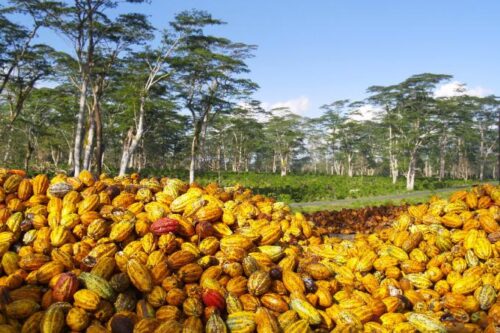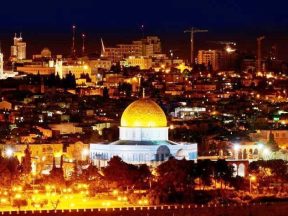A long road to Independence.
The islands of São Tomé and Príncipe were deserted until their discovery by Portuguese navigators. Even today we do not know for certain the date of this event or the names of those who first discovered the islands.
According to some scholars they were discovered by João de Santarém and Pedro de Escobar in 1451, while others, more reliably, argue that the discovery is attributable exclusively to Pedro de Escobar. Escobar arrived on the island on 21 December 1471, the feast day of Saint Thomas and from which, in fact, the name of São Tomé would derive.
In 1483 São Tomé was given as an endowment to João de Paiva who brought the first group of emigrants there made up mostly of prisoners and Jewish children separated from their parents, who settled in the Ana Ambó cove near Ponta Figo, in the North-West of the island. The arrival of the settlers on a completely uninhabited area that was also geographically defined and delimited, transformed the archipelago into a real cultural laboratory in which interesting syntheses of biological, economic, and cultural intersections were generated.
Within a few years of the settlers’ arrival, the island became one of the largest sugar producers globally.

Forte de Sāo Sebastiāo (1575) in São Tomé town. CC BY 2.0/ David Stanley
This primacy, however, lasted for a short period, ending with the entry into the market of Brazilian competition which, with its size, dealt a severe blow to the nascent economy of the country, already troubled by the social instability caused by workers subjected to slavery. The instability continued following the invasions of the Angolan tribes, accentuated at the end of the sixteenth century and coming from the northern coast of Angola, while in 1595 an indigenous man, Amador, caused a bloody revolt following which he proclaimed himself king of slaves. In the same period, the two islands were attacked by a Dutch naval team but also by privateers attracted by the riches of the plantations. Due to their geographical position, the island, after the collapse of sugar exports, was transformed into a port hub managed by the Portuguese in the function of the slave market headed for Brazil. From 1640 to 1644, São Tomé was subjected to Dutch rule, then until 1753 it was in possession of the Count of Lumiares and, from that year, together with the island of Príncipe, it passed under direct Portuguese sovereignty. Due to the frequent unrest that troubled São Tomé, the capital was moved from Santo António to Príncipe whose port was the seat of many activities. But the lack of an adequate military defence continued to make the islands, which in the meantime had been ceded by the Portuguese to the Spaniards, easy prey for the invaders and so in 1779, São Tomé was again attacked by a French group.

Yellow cocoa pod just harvested. 123rf.com
The nineteenth century brought the country back to the centre of the global economic scene. This new transformation is due to a number of factors including independence obtained by Brazil in 1822, the suppression of slavery in the Portuguese territories and the introduction of coffee and cocoa crops. The new crops made São Tomé – which in the meantime had returned to being the capital of the archipelago – the largest producer globally. The plantations were no longer worked by slaves, but by contract workers from Cape Verde, Angola, and Mozambique whose conditions, however, were not at all dissimilar to their predecessors. As highlighted by some anthropologists, the archipelago, in the eyes of Europeans, had a double value since, in addition to being perceived as a territory to be colonized in order to exploit its resources, it was also seen as a utopian place, an uncontaminated exotic garden where it would have been possible to create an ‘ideal city’, so much in vogue in the Europe of those years. Hence the birth of urban nuclei that the Rochas would become with the intention of combining unspoiled nature with the birth of these small ‘ideal cities’ to produce specific and rationalized agriculture in which work is systematically divided and organized.
Within these nuclei, a complex cultural pluralism was generated dictated by the mutual influences, clashes and encounters of the various civilizations present on the island.

Proclamation of Independence of São Tomé and Príncipe, with Nuno Xavier Daniel Dias, President of the Constituent Assembly, and Admiral Rosa Coutinho, Portugal’s representative at the ceremony. Source: Fundação Mário Soares, Arquivo Histórico de São Tomé e Príncipe.
Given its characteristics, São Tomé constituted an ideal location for Portugal to abase as it proceeded in its colonizing mission to reinforce the modest and weak role that it had in Europe.
This attitude of the Portuguese was expected to make them flexible and willing to contaminate themselves with other cultures and to create conditions of hybridization, albeit through moments of violent dialectic as in the case of São Tomé.
In the twenties of the twentieth century, the cocoa market experienced a major crisis causing the island to plunge into a new form of isolation, in which cases of violence and brutality by the Portuguese against workers became more and more frequent, including the massacre of Batepá in 1953. Following these episodes, the archipelago, which since 1951, with the reform of the colonial territories of Portugal constituted a Portuguese Overseas province with a governor and representation in the National Assembly of Lisbon, laid the foundation for its independence. Nationalist movements gradually took hold, including the Liberation Movement of São Tomé and Príncipe (MLSTP), led by Manuel Pinto da Costa who became President of the Republic following the independence of the archipelago obtained on 12 July 1975. (Open Photo: Fishermen artisanal fishing. Pixabay)
(F.R.)



